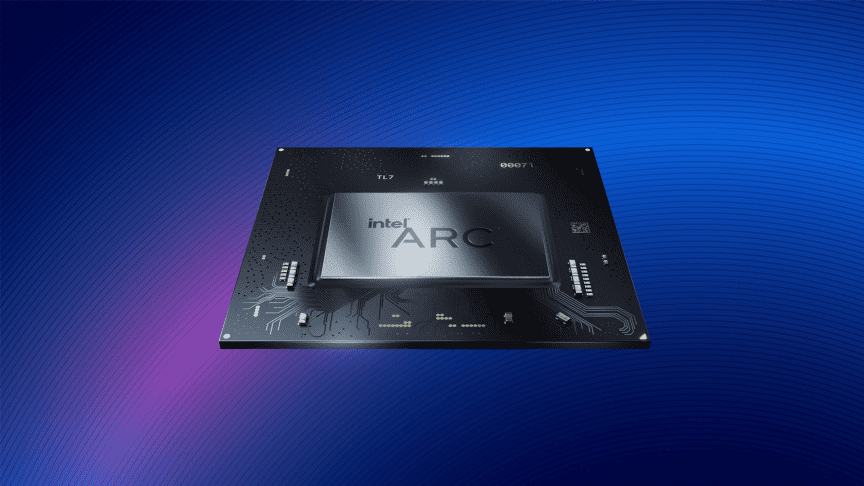Intel’s highly anticipated Arc Battlemage graphics architecture has finally broken cover, with multiple sources reporting significant progress in both hardware development and software optimization. This next-generation GPU family, positioned as Intel’s serious bid to challenge NVIDIA and AMD’s dominance, suggests that Team Blue’s graphics division is hitting its stride after the mixed reception of its first-generation Alchemist cards.
Battlemage: The Path to Performance
Recent leaks and internal documents suggest that Intel’s second-generation discrete graphics architecture represents a substantial leap forward from its predecessor. Sources familiar with the development process have indicated several key improvements:
Architecture Advancements
- Enhanced Xe2 HPG architecture with significantly improved ray tracing capabilities
- Up to 50% more Xe-cores compared to equivalent Alchemist models
- New memory subsystem supporting faster GDDR7 memory
- Improved power efficiency through advanced process node optimization
- Enhanced XMX (Xe Matrix Extensions) for better AI performance
Performance Targets
- Competitive performance with NVIDIA’s RTX 4080-class GPUs
- Significantly improved ray tracing performance
- Better power efficiency compared to first-generation Arc
- Enhanced memory bandwidth utilization
- Reduced driver overhead
Software Evolution: Learning from Experience
Intel’s software team has been working overtime to address the criticism faced by first-generation Arc products:
Driver Improvements
- Completely revamped DX11 implementation
- Enhanced DX12 and Vulkan optimization
- Improved frame pacing and latency
- Better memory management
- Reduced CPU overhead in legacy titles
Feature Enhancements
- Updated XeSS 2.0 upscaling technology
- Enhanced ray tracing performance
- Improved video encoding/decoding capabilities
- Better multi-display support
- Enhanced overlay and monitoring tools

Market Positioning and Strategy
Industry analysts suggest Intel is positioning Battlemage to target multiple market segments:
Gaming Focus
- High-end gaming performance at competitive price points
- Strong emphasis on modern API performance
- Enhanced streaming and content creation capabilities
- Competitive feature set with NVIDIA and AMD offerings
- Aggressive pricing strategy to gain market share
Professional Applications
- Enhanced compute capabilities for workstation use
- Improved professional driver support
- Better certification for professional applications
- Enhanced stability for content creation workloads
- Competitive professional features
Technical Specifications and Rumors
While exact specifications remain under wraps, reliable sources suggest:
Top-Tier Model
- Up to 56 Xe-cores
- 16GB+ GDDR7 memory
- 256-bit memory bus
- PCIe 5.0 x16 interface
- Enhanced ray tracing units
Power and Efficiency
- Target TDP of 225-275W for flagship model
- Improved performance per watt
- Better idle power consumption
- Enhanced boost algorithms
- More efficient memory subsystem
Manufacturing and Availability
Intel’s manufacturing strategy for Battlemage shows lessons learned from Alchemist:
Production Plans
- TSMC 4nm process node
- Improved yield expectations
- Better initial stock availability
- Phased global launch strategy
- Multiple AIB partner involvement
Timeline Expectations
- Engineering samples currently in testing
- Driver development in advanced stages
- Q3-Q4 2024 launch window
- Staged rollout across different segments
- Global availability from day one
Competition and Market Impact
The emergence of Battlemage has significant implications for the GPU market:
Competitive Landscape
- Direct competition with NVIDIA’s RTX 40 series
- Performance parity with current high-end offerings
- Aggressive pricing strategy
- Focus on feature completeness
- Strong emphasis on software ecosystem
Market Dynamics
- Potential impact on GPU pricing
- Increased competition in mid-high end segment
- Better options for consumers
- Pressure on incumbent manufacturers
- Potential market share shifts
Early Performance Indicators
While final performance numbers aren’t available, early indicators suggest:
Gaming Performance
- Competitive framerates in modern titles
- Improved DX11 performance
- Strong showing in ray tracing workloads
- Better 1440p and 4K performance
- Reduced CPU overhead
Professional Performance
- Enhanced compute capabilities
- Improved content creation performance
- Better rendering times
- Competitive encoding/decoding
- Strong AI acceleration
Industry Response
The GPU industry has taken notice of Battlemage’s development:
Market Reactions
- Increased competition in the high-end segment
- Potential pricing adjustments from competitors
- Enhanced focus on software features
- Greater emphasis on value propositions
- Renewed interest in GPU innovation
Developer Support
- Growing interest from game developers
- Enhanced optimization efforts
- Better day-one game support
- Increased adoption of Intel technologies
- Stronger software ecosystem
Consumer Impact
The emergence of Battlemage could significantly benefit consumers:
User Benefits
- More competitive pricing
- Enhanced feature sets
- Better performance options
- Improved software support
- Greater choice in GPU market
Value Proposition
- Competitive price-to-performance ratio
- Strong feature set
- Better long-term support commitment
- Enhanced software ecosystem
- Competitive warranty and support
As Intel’s Arc Battlemage shows signs of life, the GPU market appears poised for increased competition and innovation. With promising performance indicators and a more mature software stack, Intel’s second-generation discrete graphics cards could finally deliver on the promise of a true three-way race in the GPU market. While challenges remain, the early signs suggest that Battlemage might be the product that establishes Intel as a serious contender in the discrete graphics space.















Add Comment